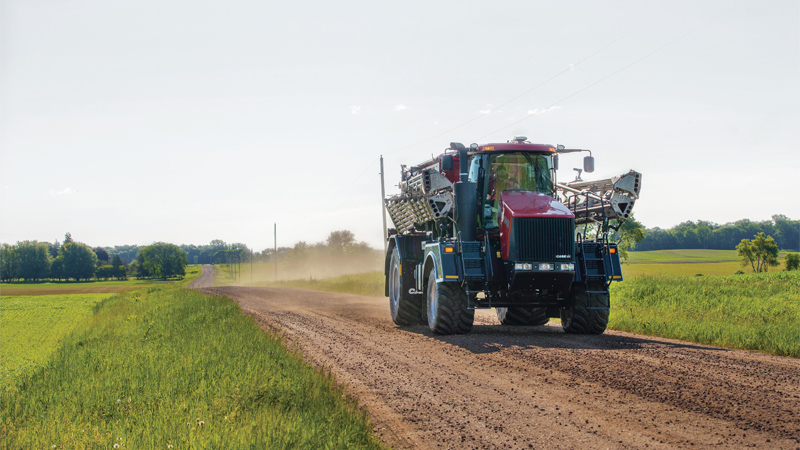CCAs Making Headway With 4R Program In Lake Erie Western Basin
With a vast knowledge of the crops that are planted and the soil they’re planted in, Certified Crop Advisers, more commonly known as CCAs, have taken an active role in the research and program implementation that will be key to improving water quality in Lake Erie’s Western Basin in the long run.
The CCA program was established in 1992 with both farmers and their environmental impact in mind. When consulting a grower on nutrient management, it’s the adviser’s responsibility to make recommendations on what’s best for the crops AND for the soil in which they’re rooted, and other surrounding natural resources. With the continuous evolution of seed corn, soybeans and the fertilizer nutrients that help crops grow, the CCA program ensures that advisers stay abreast on current issues and trends in agriculture.
“Ohio’s CCAs are trained with the latest, available information through the continuing education requirements of the program,” said Tim Berning, chairman of the Ohio CCA board. “They’ve also been trained to use the best management practices to reduce nutrient runoff.”
One of the best practices followed by CCAs is that of 4R Nutrient Stewardship, referring to using the Right Source of Nutrients at the Right Rate and Right Time in the Right Place. While the 4Rs originally took hold among CCAs, they’ve since become a way of life for many in Ohio agriculture.
The 4R Nutrient Stewardship Certification program was launched in March 2014 by the Nutrient Stewardship Council and encourages agricultural retailers, service providers and other certified professionals to adopt proven best practices through the 4Rs.
Outlining 43 criteria to be implemented, the voluntary program is staggered over a three year period.
CCAs located in the Western Lake Erie Watershed and throughout Ohio in general are engaged in and supportive of the certification program, they’re invested in improving the guidelines based on current research projects in the area. The Ohio CCA board is well represented on the 4R Nutrient Stewardship Certification Program Advisory Committee and Ohio Lake Erie Phosphorus Task Force, giving an added perspective to the group’s findings and analyses of the phosphorus level found in Lake Erie.
“Results from the current water studies in the Maumee Watershed will help guide future training,” said Berning.
Research is being conducted across the state related to water quality from a nutrient standpoint, according to Greg LaBarge, an Ohio State University Extension Agronomy field specialist, which will help shape the guidelines of the 4R Nutrient Stewardship Certification program moving forward.
Current studies include:
- Edge of Field and In-Stream Treatment Effects on Water Quality – Analyzing different practices of water management, including alternative ditch design, with their impact on nutrient retention and water quality and translating into a revised Phosphorus Risk Index.
- Soil Fertility Recommendations – Evaluating phosphorus, nitrogen and potassium management on Ohio crops.
- Yield-Limiting Factors on Soybean Production – Identifying limiting factors on soybean yields, including fertility variables, across more than 100 on-farm test sites.
- Economic Impact of 4R Adoption by Agricultural Retailers – Understanding the economic considerations in 4R adoption through clientele service shifts and capital needs.
- Farmer Opinion Survey – Learning values, beliefs and attitudes of people who contribute to and are most impacted by land management and environmental impacts.
- Understanding Climate and Best Management Practices Effects on Lake Erie Watershed – Modeling of climate and the use of different practices with their potential effect on water quality outcomes.
All in all, the 4R Nutrient Stewardship Certification program has been an asset to Ohio CCAs, helping them spread the word about responsible nutrient management and teaching others how to apply the 4R principles to their own and their customers’ operations.
“All Ohio retailers have the option to prove to the general public they care about water quality by signing up for the 4R certification,” said Berning. “The program’s report card gives them credit for the things they do right and allows them to make changes where needed.”
So far, 49 agricultural retailers in the Lake Erie region have signed up for the voluntary certification program. But in light of the Toledo water situation last month, that number may very well rise, as more and more farms, agribusinesses and CCAs in the Western Lake Erie Basin are doing their part to improve water quality by implementing the 4Rs.
“Let us use this awareness and energy to identify best management practices that improve water quality,” said Berning. “Cooperation between all parties will yield faster and better results.”






